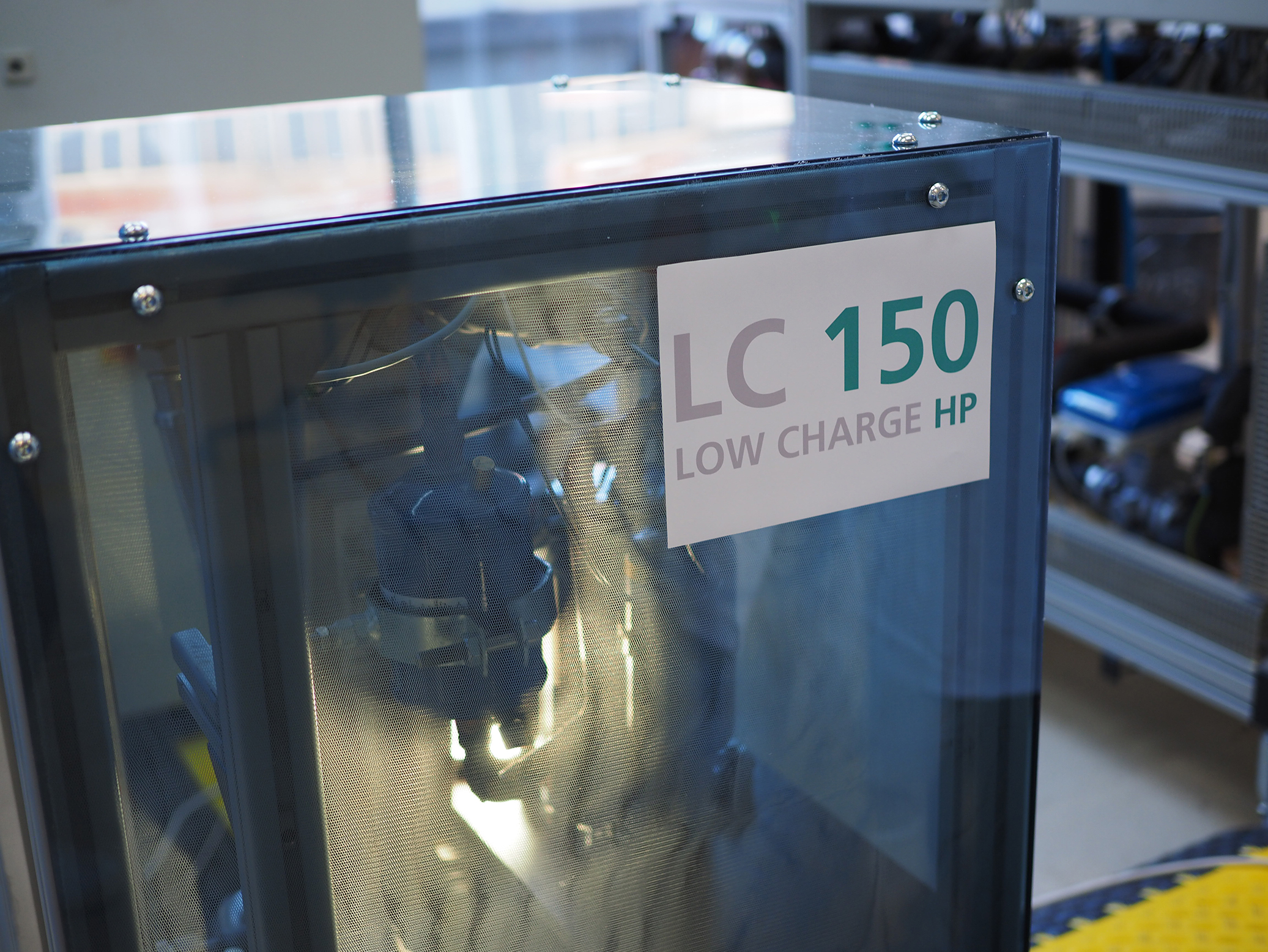Fraunhofer ISE
Heat Pumps with Climate-Friendly Refrigerant Developed for Indoor Installation
The use of environmental energy to supply heating results in less carbon dioxide emissions. Also the emissions from the electricity generation are steadily decreasing. Therefore, heat pumps are a key heating technology for the future. On the other hand, heat pumps still primarily use refrigerants that are harmful to the environment. Now researchers at Fraunhofer ISE, however, have developed a climate-friendly alternative, which uses propane, a natural gas. The greenhouse gas potential is about 500 times less than conventional refrigerants and thus extremely low. Another advantage is that the new brine-to-water prototype requires only one fourth of the refrigerant compared to conventional heat pumps available on the market at the same power. A propane heat pump based on this development would be the first-of-a-kind in Germany that is permitted in interior spaces of residential buildings without implementing additional safety measures. This new technology shall now be improved upon. For the heat pump industry, new refrigerants are especially important: As of January 1, 2020 first bans on harmful refrigerants take effect in the European Union.

The EU Regulation No. 517/2014 on fluorinated greenhouse gases, or F-Gas Regulation, mandates a continual reduction of the refrigerants that are potentially harmful to the environment. The regulation aims to decrease emissions from refrigerants by 70 percent by 2030, compared to 1990 values. After 2020, use bans on refrigerants with a global warming potential (GWP) of more than 2500 times that of CO2 (i.e. GWP = 1) take effect. Afterwards the permissible value shall sink from year to year.
Indoor Propane Heat Pumps Practically Non-Existent on the Market
Heat pump manufacturers and institutes are searching frantically for alternatives to conventional refrigerants. First advances have been achieved, yet most of the new alternatives are either poisonous or flammable and therefore belong to safety groups that have to meet stricter requirements. This makes the systems more expensive. The GWP value of propane is 3. As coolant, it is climate friendly, relatively inexpensive, worldwide available and leads to high coefficients of performance. Due to its flammability, however, the safety regulations for its use as heat pump refrigerant, also known under the name of R290, are quite elaborate. A heat pump in a single-family home ranges between five and ten kilowatts power. If the prescribed upper limit of 150 grams coolant is exceeded, then the heat pump can be installed only by implementing extensive and costly safety requirements. Due to this, propane heat pumps which can be set up inside the building are almost non-existent on the market.
Research at Fraunhofer ISE Could Open up the Market
The newly developed prototype at Fraunhofer ISE with the working name LC150 could change this. With 150 grams of propane, the heat pump reaches eight kilowatts heating power. At this value, the unit can be installed inside the building without implementing additional safety requirements. Each kilowatt requires about 20 grams of propane. To compare, commercially available systems currently have 80 to 90 grams coolant per kilowatt power, so that at around two kilowatts, the upper limit of 150 grams is exceeded. Therefore, the majority of heat pump manufacturers currently offer propane heat pumps exclusively for outdoor installation.
“The objective of our work is to develop a heat pump that uses a climate-friendly refrigerant and at the same time achieves high power and efficiency using the lowest possible refrigerant amount,” says Dr. Lena Schnabel, Department Head of Heating and Cooling Technology at Fraunhofer ISE. “The first step has been taken. The prototype achieved the level of power envisioned for this market segment at a very low refrigerant charge, bringing the vision of an indoor installation closer to reality.” Now the researchers in Schnabel’s department want to optimize the system and attract industry partners for a wide implementation of the technology on the German and European market. Increasing the efficiency and developing a design for series production are top on the list. Ultimately a compact and cost-effective system shall be created that is also standardized and fulfills the different national safety standards.
Asymmetrical Plate Heat Exchanger as Success Factor
The Fraunhofer ISE researchers used components which were available on the market to build the prototype. A main building block behind the concept is the use of asymmetrical plate heat exchangers. Since most of the refrigerant is located in the heat exchangers and pipe system of the heat pump, the optimization of the heat exchanger has a great effect on the reduction of the used refrigerant. Due to their design, asymmetrical heat exchanger do not require as much refrigerant.
The researchers could greatly reduce the refrigerant demand also by decreasing the amount of oil in the compressor. The system has been comprehensively analyzed in experiments. The operating variables were the variation in the source and sink temperatures, the compressor speed, the refrigerant charge, the amount of oil in the compressor, and overheating.
Fraunhofer ISE performs research on heat pumps along the entire value chain: from materials, through component and device development up to quality assurance and monitoring in the field. The institute also has an accredited TestLab Heat Pumps and Chillers. This wide-ranging competence and experience formed the basis for the development of this promising heat pump.